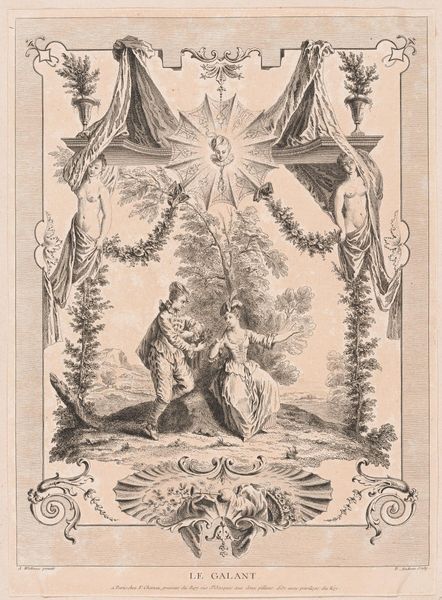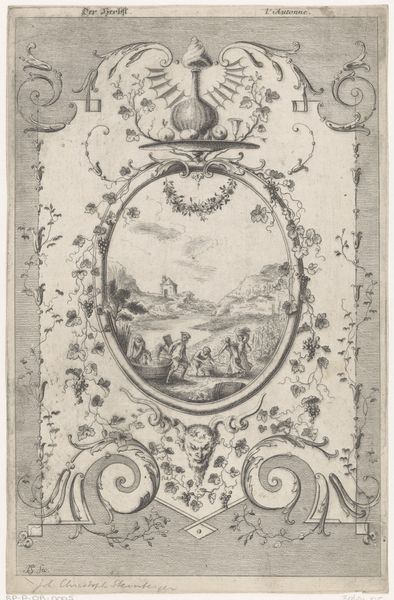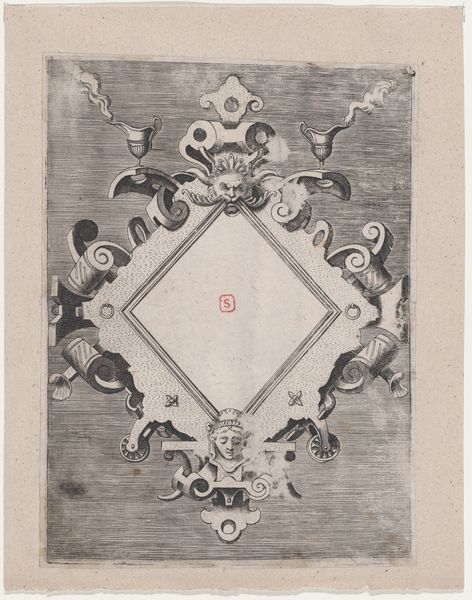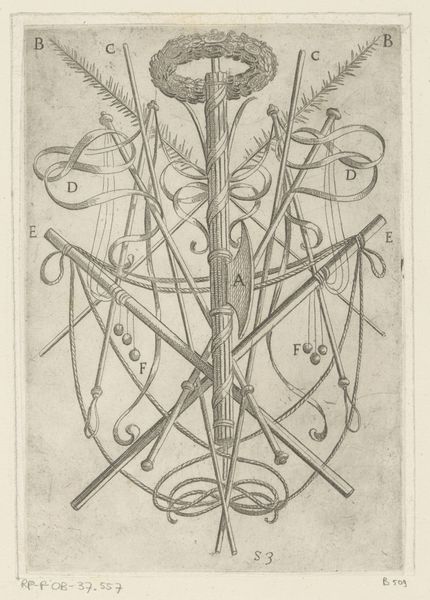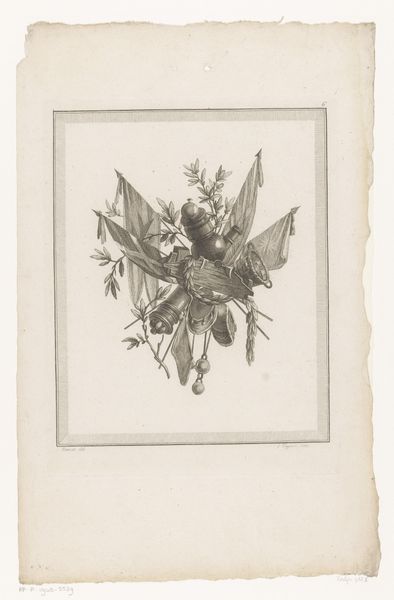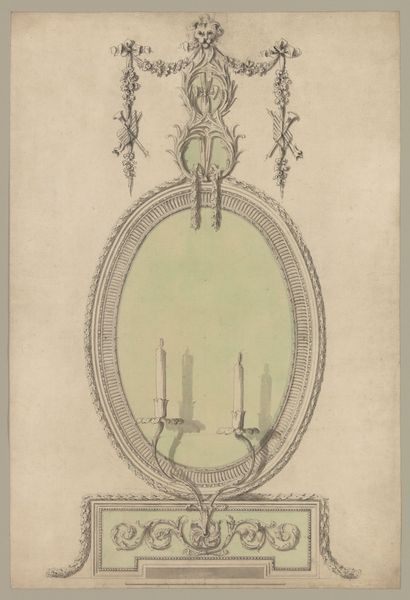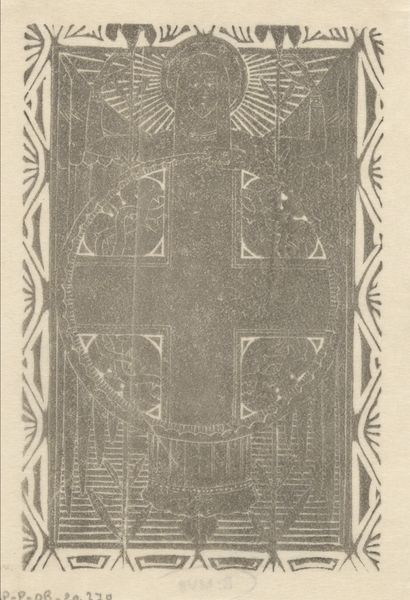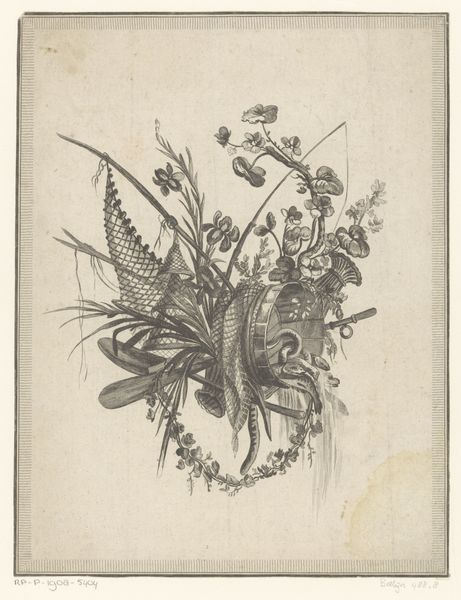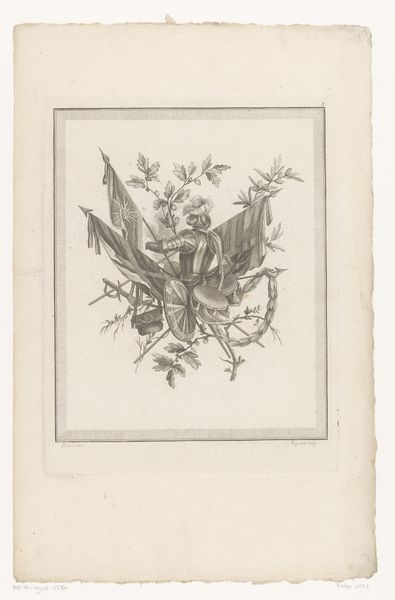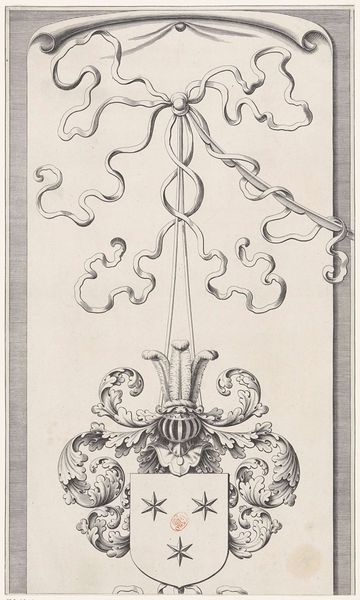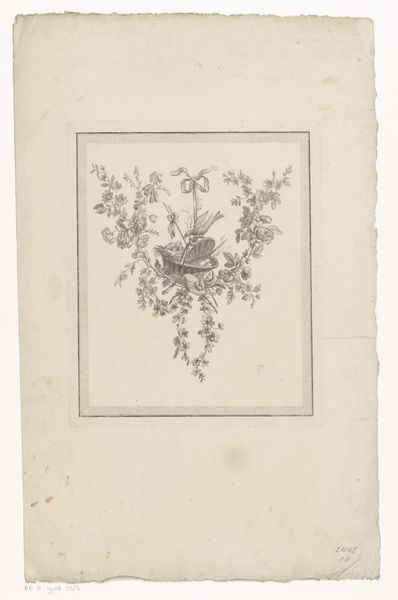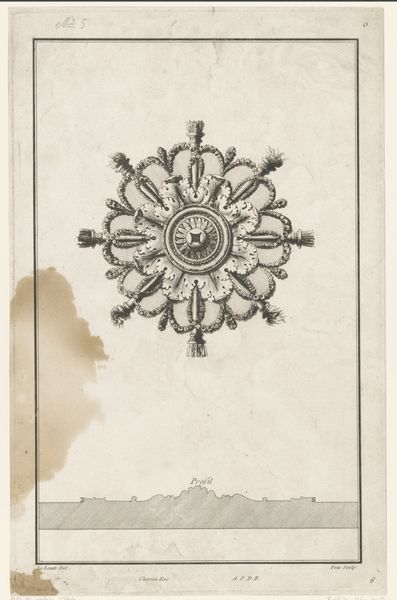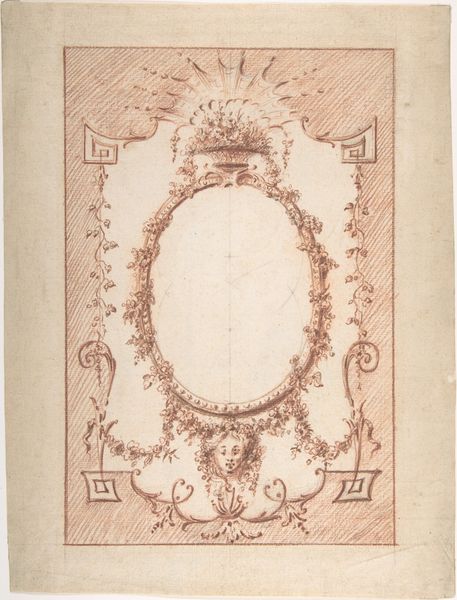
drawing, print, engraving
#
drawing
#
water colours
#
narrative-art
# print
#
figuration
#
coloured pencil
#
romanticism
#
history-painting
#
engraving
Dimensions: Sheet: 17 3/16 × 11 11/16 in. (43.7 × 29.7 cm)
Copyright: Public Domain
Curator: Let's turn our attention to "The Fall of Icarus," an 1834 engraving by John Doyle, currently residing at the Metropolitan Museum of Art. Visually, it's immediately striking—a rather literal depiction of plummeting hubris. Editor: The figure is quite central, the fall almost radiating outwards, emphasizing the tragedy, and it makes me think about what constitutes Romanticism at that time. Curator: Absolutely, let's deconstruct this visually: The sun, positioned high, almost godlike, radiates shafts of light creating the scene with dynamic lines that frame Icarus’s descent. It contrasts sharply with the scattered feathers. Note Doyle’s command of line. Editor: I agree, the visual weight is strategically focused on the figure itself, his dark clothing accentuates this central tragedy. Still, I am more intrigued by what Doyle, the maker, puts into play; an engraver using what media? Here's where labor meets mythological storytelling and Romantic ideals collide. What were his resources? What print runs? Who consumed them? Curator: Intriguing questions that bring a unique view on Romanticism. Considering his background, a renowned political cartoonist, the piece invites interpretations beyond just the mythical narrative. Perhaps a commentary on ambition exceeding capability, crafted as a memento mori in early 19th-century Britain. The balance between classical myth and romantic rendering of dramatic, often violent themes remains interesting. Editor: Exactly, and how are the historical social conditions made tangible, given this was after the rise of industrialism where print and engraving shifted production dramatically? Doyle uses print and its labor history, engaging classical and philosophical discourse about industrial conditions; there's a lot to chew on. Curator: A dense artwork which manages to distill a tragic narrative, it uses formal elements to amplify meaning in relation to its historical context and theoretical implication. Editor: To be sure. Every choice, from medium to subject, echoes throughout time, sparking diverse perspectives.
Comments
No comments
Be the first to comment and join the conversation on the ultimate creative platform.
